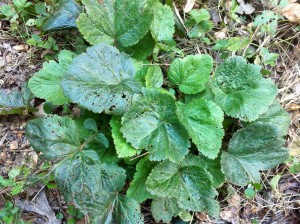When we moved into our new townhome in the concrete jungle of inner Brisbane, I suggested fruit trees and berries instead of pretty plants that do nothing.
I was shot down.
At least my strip of concrete balcony has lemon and lime trees, a variety of berries, and  veggies. We would starve if we had to depend on my plants for sustenance.
veggies. We would starve if we had to depend on my plants for sustenance.
Because farming is hard.
But I like the concept of an agrihood which, according to the N.Y. Times, is a residential development where a working farm is the central feature, in the same way that other communities may cluster around a golf course, pool or fitness center.
At least a dozen projects across the country are thriving, enlisting thousands of home buyers who crave access to open space, verdant fields and fresh food.
“I hear from developers all the time about this,” said Ed McMahon, a senior fellow for sustainable development at the Urban Land Institute, a nonprofit real estate research group in Washington, D. C. “They’ve figured out that unlike a golf course, which costs millions to build and millions to maintain, they can provide green space that actually earns a profit.” Not to mention a potential tax break for preserving agricultural land.
In Agritopia, near Phoenix, fences gripped by grapevines and blackberry bushes separate the farm from the community’s 452 single-family homes, each with a wide front porch and sidewalks close enough to encourage conversation. A 117-unit assisted- and independent-living center is set to open this summer.
The hub of neighborhood life is a small square overlooking the farm, with a coffeehouse, farm-to-table restaurant and honor-system farm stand. The square is also where residents line up on Wednesday evenings to claim their bulging boxes of just-harvested produce, eggs and honey, which come with a $100-a-month membership in the community-supported agriculture, or C.S.A., program. Neighbors trade recipes and gossip, and on the way home can pick up dinner from one of a few food trucks stocked by the farm.
The Times story glosses over the realities of farming and the safety aspects, but the idea of an agrihood – even if apparently appropriated by white folks — has merit.


